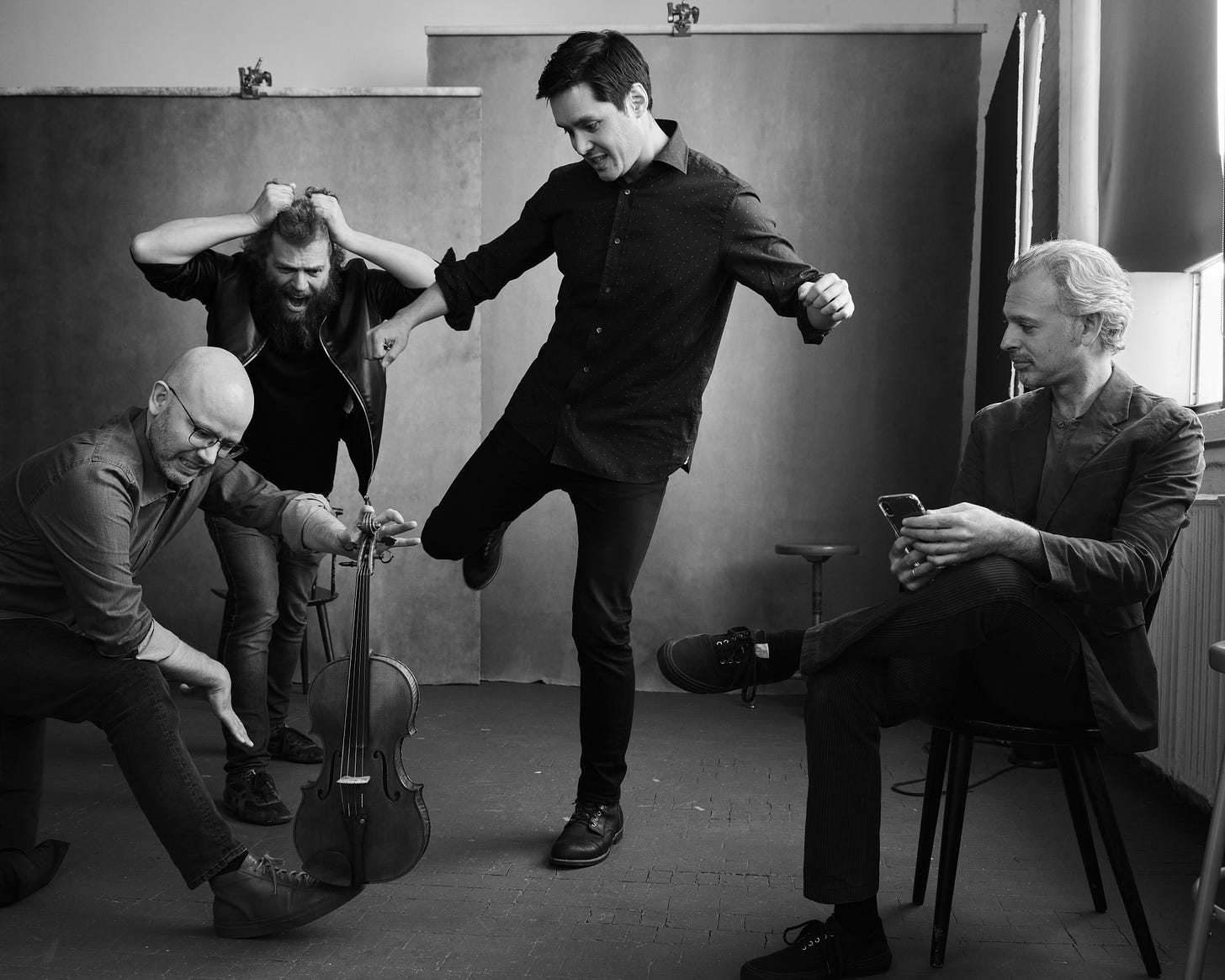For Chamber Music magazine, I wrote about Brooklyn Rider’s new album, The Four Elements, and Owls’s debut album, Rare Birds:
Folk music and the string quartet are strange bedfellows. On the one hand, the two seem made for each other. Some of the most famous quartets by Haydn, Beethoven, Schubert, Dvořák, Bartók, and Florence Price, among others, incorporate dances, ditties, and spirituals from their national traditions. Some composers take liberties with such source material and make the tune their own. Others—like Bartók, who was as diligent a musicologist as he was a composer—take pains to replicate rhythm and ornamentation as faithfully as possible while retaining an improvisatory feel.
Even for someone who knows little of the history of the string quartet, there is something inherently folksy about an ensemble of four string players. Maybe because, in the Western imagination, the fiddler is such a potent image of the lone country performer who makes everyone happier when he comes around—a Mr. Bojangles with a bow. The genre also came of age during the Enlightenment, traditionally seen as both a period of rediscovering the individual and of experiments in representative government. In his 2023 book, Musical Models of Democracy, musicologist Robert Adlington notes that, in the eighteenth century, the string quartet was “expressly valued for the egalitarian social relations it instantiated in performance. By the mid-twentieth-century, musicians openly characterized this aspect of quartet playing as ‘democratic.’” Of all the typical ensemble arrangements, the string quartet seems almost to have been predestined as a vehicle for the preservation and dissemination of folk traditions to concert audiences.
On the other hand, a string quartet can quash the spirit of folk music. Like an elite dressmaker who incorporates traditional tribal patterns for rich white patrons to don at the Met Gala, some composers who use folk elements in their string quartets end up exploiting or museumifying a tune. Like an ancient coin in a glass case, the cultural currency the music held within a community ends up on display instead of in circulation. A hymn that a singer could twist and turn and sustain as much as he or she wanted, a rhythm that dancers might sprain their ankles trying to get right, a song that a lovable drunkard sang at a pub—these can get buttoned up with virtuosic flourishes, or hemmed in by the windowless walls of a concert hall. As four players dressed in black sit on a stage, assiduously reading sheet music and demanding silence from the audience, the string quartet starts to look a little less like a democratic society and more like a monarchy.
I’m not sure when the article will be online, but it’s in the print issue, out now. I’m not sure where you can find a print issue. I’m also not sure when my print issue is going to arrive. But you can read the rest here, if you zoom in.



